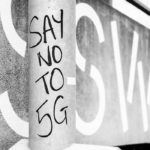 The spread and virality of misinformation has been one of the defining features of the COVID pandemic. While various attempts have been made to stem the tide, these have largely failed. New research from North Carolina State University highlights the thanklessness of the task.
The spread and virality of misinformation has been one of the defining features of the COVID pandemic. While various attempts have been made to stem the tide, these have largely failed. New research from North Carolina State University highlights the thanklessness of the task.
The study outlines two of the main reasons why stopping the spread of misinformation has been so hard. Firstly, we tend to think we’re much better than we are at spotting misinformation, and secondly, misinformation is often designed to trigger the kind of negative emotions that resonate with us.
The researchers quizzed nearly 1,800 adults to try and understand the extent to which misinformation has affected them during COVID, their support for government-led action on social media, and for media literacy training more generally.
False sense of security
The study found that people generally thought that vulnerability to misinformation was something that affected other people more than themselves.
“This makes it harder to get people to participate in media literacy education or training efforts, because it suggests that most people think everyone else needs the training more than they do,” the researchers explain.
The data also revealed that misinformation was predominantly generating negative emotions, such as worry, fear, or disgust, which is troubling for a couple of reasons.
“First, people are likely to act on content that evokes negative emotions, and that includes sharing information on social media,” the researchers explain. “Second, messages that are focused on emotions are more easily transmitted on social media than content that is neutral – such as abstract scientific information.”
The researchers hope that science communicators could also use the findings to better tailor their messaging so that it gets through to people.
“Since fear, worry, or other negative emotions can facilitate information seeking, or encourage people to avoid specific behaviors during a crisis, communicators may want to consider using these emotional messages to convey accurate information about COVID-19 and public health,” they explain.